Great Campaigns of the ACW.
The fatigue system is the focus point like it or not in this system. BUT you cannot plan very much to minimize fatigue, as you must select the Formation(s) to activate THEN roll to see movement rate for the formation. Thus throwing chaos into your strategic plan. Every action you conduct incurs fatigue; movement, combat, combat results etc.
For if you thought it would take 2 moves to get where you need to be and you movement rate ends up being less, you are faced with incurring a higher fatigue level to achieve the stated goal. Should your units arrive fresh or tired? Reduced due to stragglers or fresh at a later date and time?
Now while your force might need to rest prior to fighting, the enemy could move away in the mean time OR they might attack you!
This is for me a educational example of Eric Monroe Walters efforts to help me learn about the Operational Art of War. Bring the right forces at the right time to destroy the enemy and achieve your Strategic goal.
Thus the game is ideal to capture the potentially most interesting aspect of the ACW – maneuver. Yes the battles were interesting, and bloody and bloody tragic. To me tho the genius of the era and the fascination for me has always been at the operational scale. Why? In a post Napoleonic world with rail, the telegraph, riverine systems, iron hulled ships and improved munitions (artillery, carbine etc) there was a lot going in some very challenging terrain.
After playing this game and failing to allow my self to be enthused about ACW tactical systems such as Line of Battle and all the other regimental, brigade level games I see why. The battle of the day just aint the thing that drove this war. Generals good, bad and ugly came and went from battle to battle it however was the Generalship of those who manouvered TO the battle with the right force at the right time that won the day and the war.
As yet,just the standard game has been explored. So thoughts on supply, wagons, bridge burning and the like will have to wait a while. The images here are from the third scenario that portrays 3 days of action.
The Battle is set in September 18-20 in 1863, the Battle of Chickamauga.
In the opening activations Bragg rushes the Union forces near Crawfish Springs across the Chattanooga creek. The Union quick rotates forces out and both sides quick reach fatigue level 4. Rosencrans and 8 infantry steps fill the breach while Palmer retires towards the township of Howard.
Our forces retreat! – The Rebs cross over.
Then just to keep the Union on their toes they push forces from the North deep towards VP locations. Caught flat footed from the out set the Union scrambles to get forces North without exposing attacks from the South.
When we pause this is where we leave off. The Rebs have grabbed two key VP locations and the Union is a bit stumped, stunned and puzzled as to what is next!
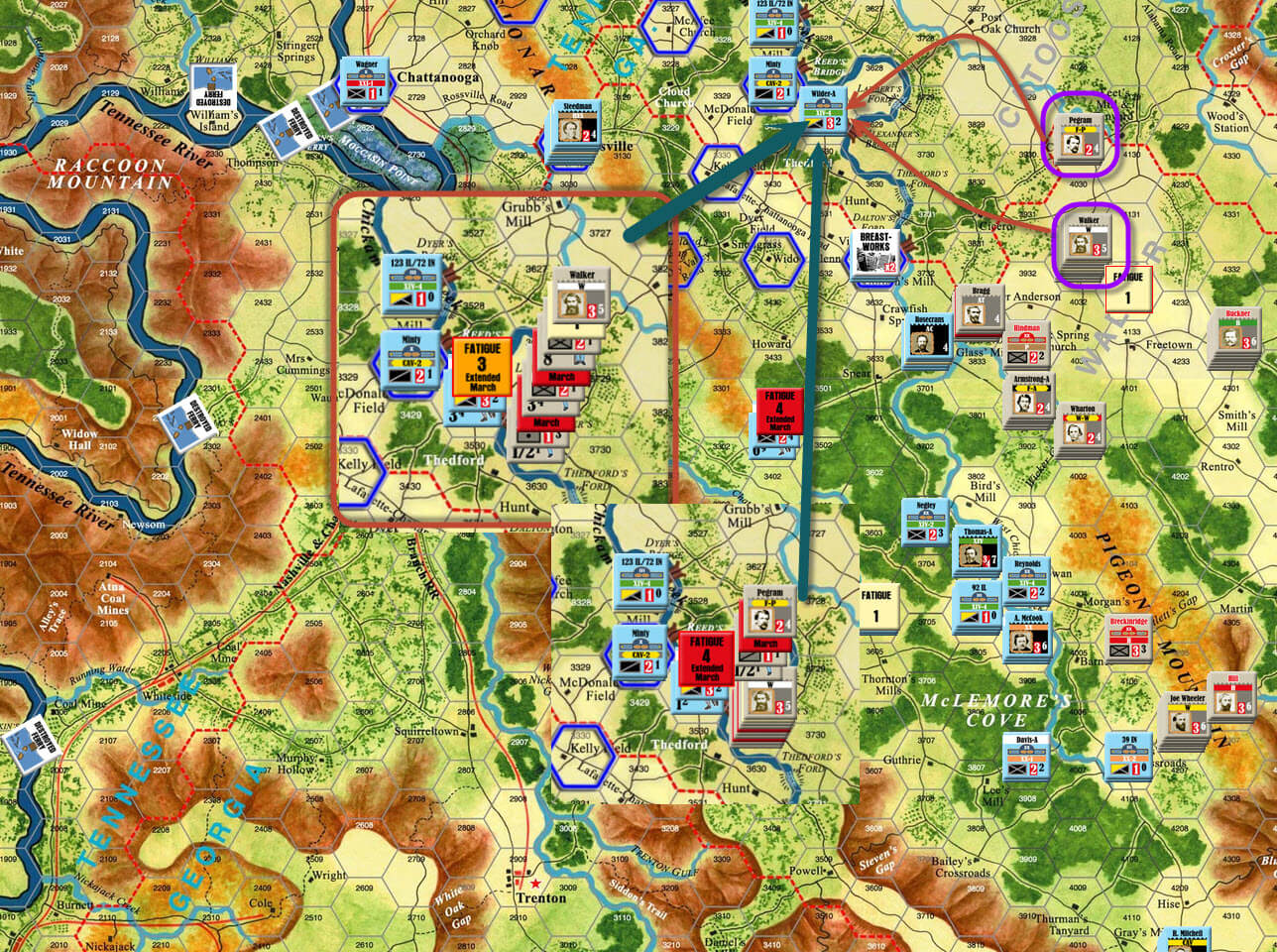
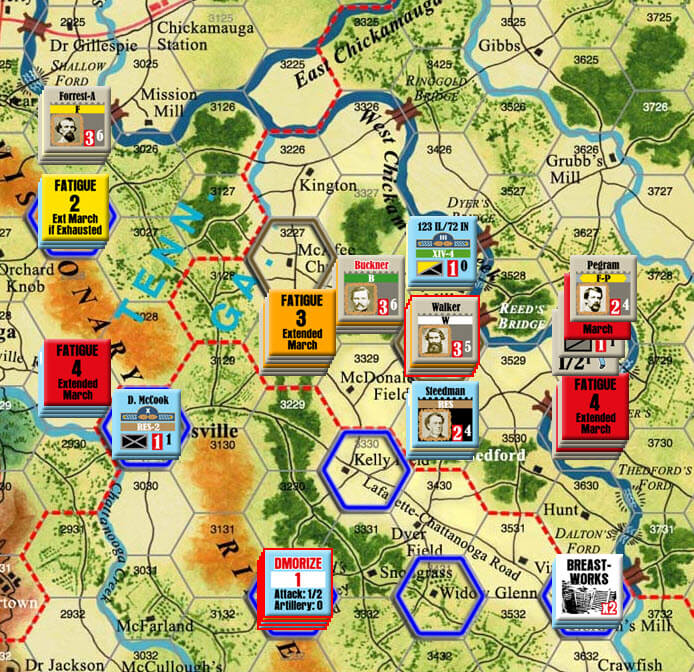
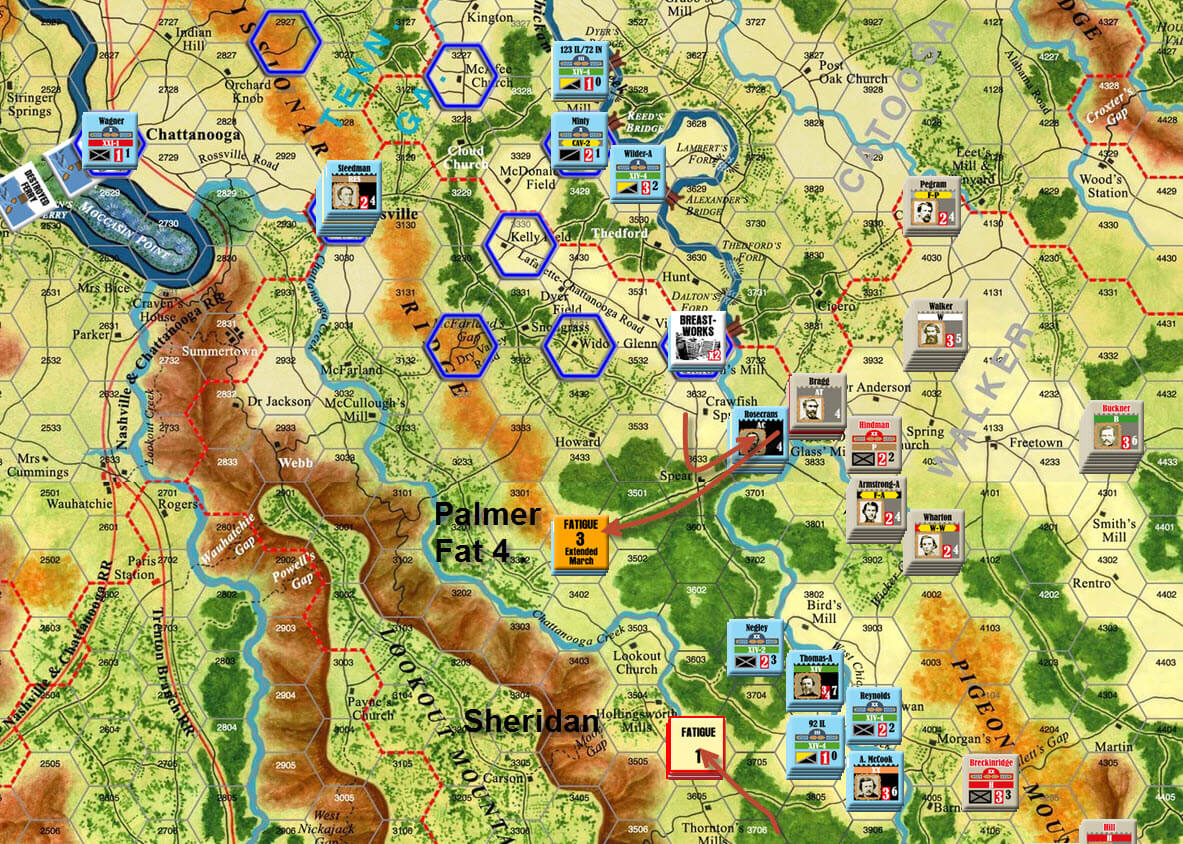
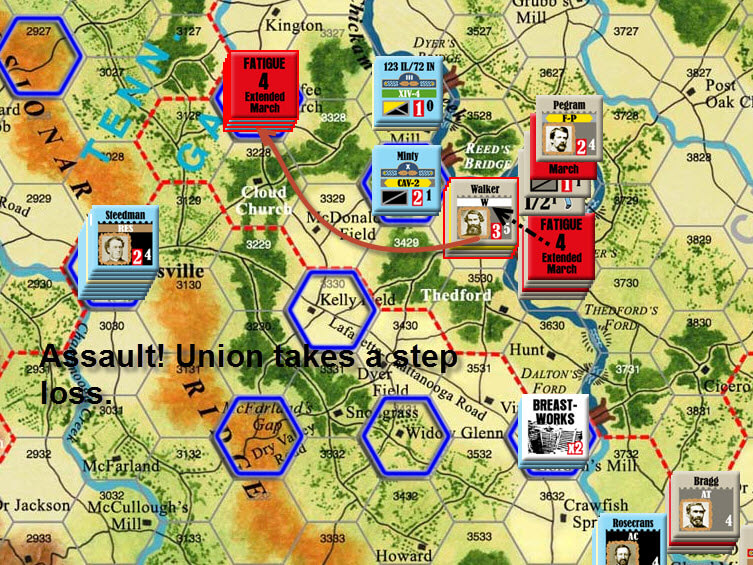
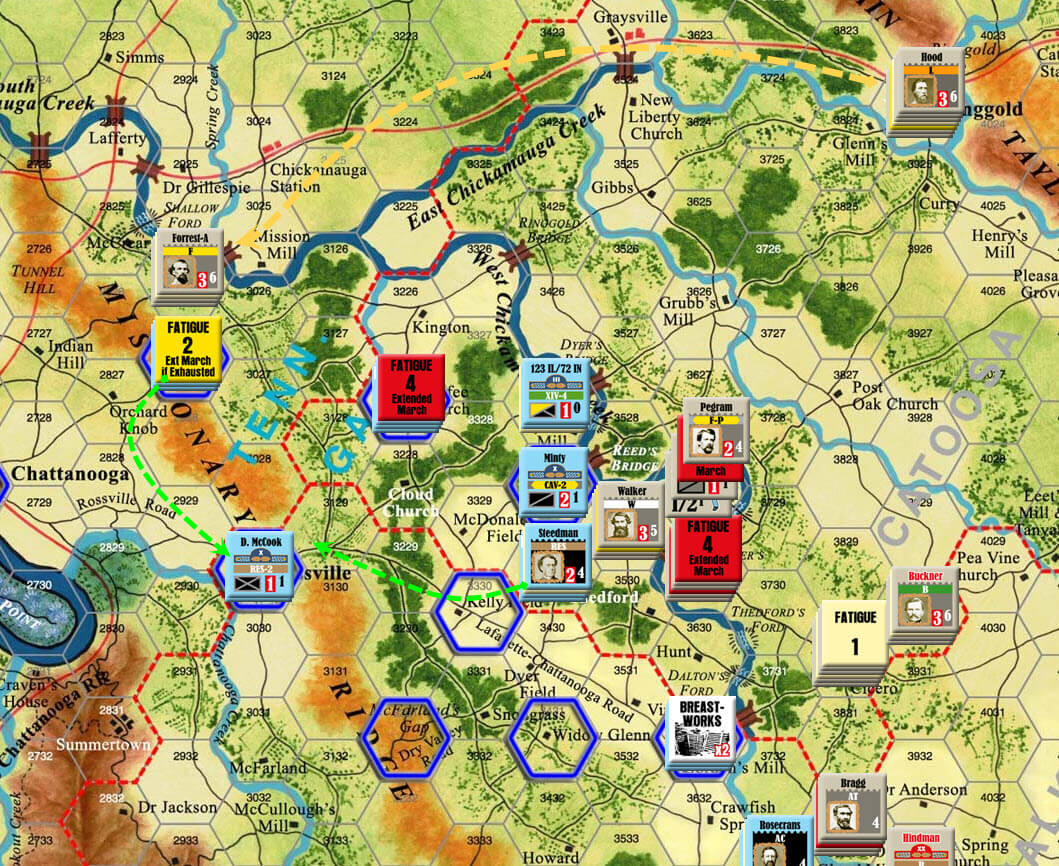
The game looks interesting! Thanks for sharing these turns.
Kev, while it was indeed the Generals who maneuvered the forces to battle that deserve the credit, quite often it was the Generals on the battlefield who won or lost the day. Bragg executed 3 great maneuvers that should have crushed portions of Rosecrans Army, but it was his Generals on the Field, Hindmann at McLemore’s Cove, Polk at Lee and Gordon’s Mill, and at Chickamauga itself pretty much all of his Generals cost him his opportunity to crush Rosecrans. whereas on the Union side, it was George Thomas’ performance on the field which saved the day for the Union.
This game handles Bragg’s insubordinate generals very nicely. There is a chance in every phase for the reb generals to disobey orders.
indeed. Stop reading start playing…